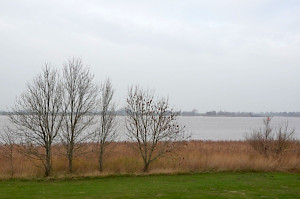Visurgis (Weser)
Q1650Visurgis: (Greek: Βίσουργις): river in northern Germany, modern Weser.

The river Weser, called Visurgis by the Romans and perhaps derived from Germanic *weis-, “to flow”, has two sources in the central part of what is now Germany. The two rivers, now called Werra and Fulda, originate in Thuringia at a place that Ptolemy calls Mons Melibocusnote and join at Hannoversch Münden. From here, the Weser flows to the North Sea; its course is about 450 kilometers long.
Along the Weser were several Germanic tribes, like the Cheruscans (in the area of Hamelin and Minden), the Angrivarii along the lower reaches, and the Chauci on the sea shore. These were the people living on terps, artificial mounds.
The Roman general Drusus reached the river mouth in 12 BCE;note he reached the Hamelin/Minden area in the next summer;note and in 9 BCE, he explored the area east of the Weser, even reaching the river Elbe (ancient Albis).note A Roman supply base from this age has been discovered at Hedemünden, several kilometers east of Hannoversch Münden. Here, food must have been gathered for an important but hitherto not identified base further downstream, probably identical to the one that must be east of Anreppen, where a paved way to the east has been found, and therefore in the Hamelin/Minden area. It may have been the place where Varus was staying in 9 CE.note
The area west of the river was converted into a tax-paying Roman province by Marcus Vinicius (1-4 CE) and by Tiberius (4-5 CE).note After the massacre in the Teutoburg Forest in 9 CE, the land between the river Rhine and Weser was abandoned, although Germanicus fought a battle near the Weser.note